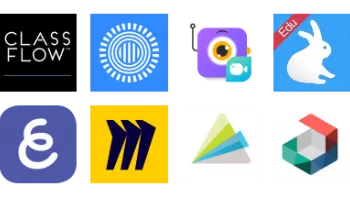Take a look inside 6 images
Prezi
Pros: Huge library of pre-created templates makes it quick to get presentations off the ground.
Cons: Imported slides may not retain all links and content from the originals.
Bottom Line: With its zoom in and out capabilities, Prezi helps teachers and students go beyond traditional presentations to put important content front and center.
Use Prezi to highlight key points without all the distractions that regular slideshows may present. Teachers can use the tool in a traditional classroom setting to lay out key ideas, or they can design full lessons to be viewed at home either independently or through a virtual class meeting. For students, it's a great fit for presenting research in a meaningful, organized way -- or even for sharing research or passion projects.
There are opportunities to teach design skills through the platform too, making Prezi a great fit for marketing school events and extracurricular activities. Because templates are premade, there's not as much of a learning curve in terms of the initial layout, so teachers can encourage students to focus on engaging their audience with meaningful content. There are also built-in bells and whistles, such as transitions, images, GIFs, and more.
Prezi has its uses for professional development as well. Easily inserted charts, images, videos, and text can jazz up the already well-organized templates, making it easy to deliver professional-looking, personalized content. Just be sure to adhere to design principles that will get your point across without overwhelming your audience with too much information at once.
Prezi is a multimedia platform where users can create slide presentations, videos, or designs to share. Whether starting from a blank canvas or using one of the templates from the site's vast library, users have many options. Users can start Prezis in three ways: from scratch, by uploading an existing PowerPoint presentation, or by choosing from the library of available templates on the site. Students and teachers edit Prezis to navigate through a series of paths and can zoom in to different levels in order to get more detailed and creative, adding videos, images, charts, icons, text, and more.
For videos, there are options to create a quick recording, upload a file, or present live through videoconferencing software. Note that when importing slides, such as from Google Drive, links or videos may not transfer.
Presenters can move between their slides with or without their faces showing. The Design feature enables users to select or create content such as YouTube thumbnails, flyers, infographics, and more. Despite the complex capabilities of Prezi, the different types of content each have their own tab, so the interface remains fairly uncluttered and fun to use.
To see how this tool works, watch our video overview of Prezi.
Tools like Prezi are only ever going to be as effective as educators make them. Easy-to-modify templates, reusable lessons, multimedia add-ins, and the ability to bring specific content to the forefront are all great ways to engage kids, whether they're making or watching. Prezis, done well, can reach students with different learning preferences as well as spark creativity and collaboration.
Students will need time to learn how to navigate the tool and its editing features. Teachers can provide resources and support for how to create engaging presentations, videos, or designs. Kids who are just getting started can choose less complicated templates, while more advanced students can choose a more complex presentation to modify. Teachers and students can also collaborate with other users via invitation, making Prezi a good fit for group projects, but collaborators must have a Prezi account to participate.
















